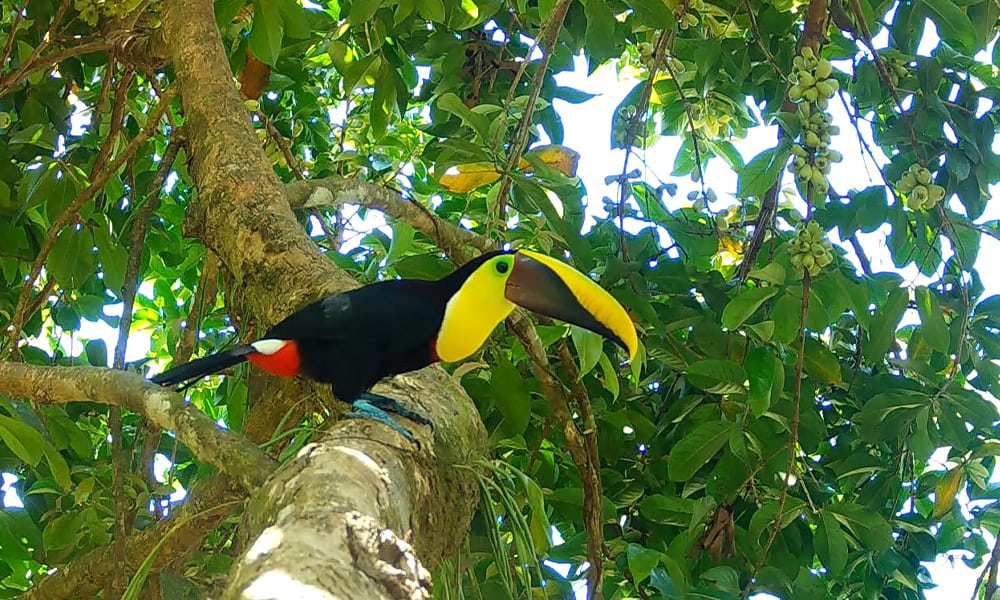Today we meet Costa Rica’s largest species of toucan. The blue-footed, large-beaked, incessant singing chestnut-mandibled toucan.
Let’s start with the name game. The chestnut-mandibled toucan (Ramphastos ambiguus swainsonii) is a subspecies of the yellow-throated toucan (Ramphastos ambiguous). There are three subspecies of yellow-throated toucan, with the other two sharing the name black-mandibled toucan.
To add another layer to this naming onion, the chestnut-mandibled toucan is also known as Swainson’s Toucan, named after old-timey English ornithologist William Swainson, whose name graces a whole slew of birds. The only Spanish name I’ve personally ever heard also pays tribute to Swainson, tucán de Swainson, but one of my bird books says they’re also called Dios-te-dé and quioro.
The chestnut-mandibled toucan is large. It’s mostly black with some white and red on the hind-end and a bright yellow throat. Its inquisitive eyes are jet black with a bright green rim. Its feet are blue, and its enormous beak is yellow on top and dark maroon below divided horizontally on the upper mandible.
Their range in Costa Rica extends from about Carara on the Pacific coast south to the border of Panama to an elevation of about 6,000 feet. On the Caribbean side, they’re found along the coast up to middle elevations, extending throughout the entire northern part of the country.
They generally travel in small flocks of three to twelve birds. They fly from tree to tree in the forest canopy with short undulatory flights where generally you can hear them crashing around but they’re difficult to spot. Fortunately for us bird fans, they often leave the cover of the forest into semi-open areas with scattered tall trees where they’re easy to line up in your binoculars.
Their diet consists mainly of fruit which they often hold in their large beak then toss in the air to catch and gulp down in much the same way my kids eat popcorn. Their diet of fruit is supplemented by the occasional insect, reptile, or nestling bird (much to the horror of folks who thought they were obligate fruit-eaters). The chestnut-mandibled toucan that I considered my friend at the wildlife rehabilitation where I worked enjoyed banana, papaya, and toucan-chow which I assume is difficult for his free-flying brethren to locate in the forests of Costa Rica.
When I’m in the right part of the country, chestnut-mandibled toucans are easy to spot and even easier to hear. During the evening entire groups will sing keeuREEK, kirick, kirick over and over again. I recorded one with my camera traps while on vacation a few years ago by baiting a little tree with a papaya in front of my cabina. Recently I recorded a few more videos in a water apple tree in my project with Finca Bella Vida in Pérez Zeledón which provided me with enough footage to make the video below.
About the Author
Vincent Losasso, founder of Guanacaste Wildlife Monitoring, is a biologist who works with camera traps throughout Costa Rica. Learn more about his projects on facebook or instagram. You can also email him at: vincent@guanacastewildlifemonitoring.com






